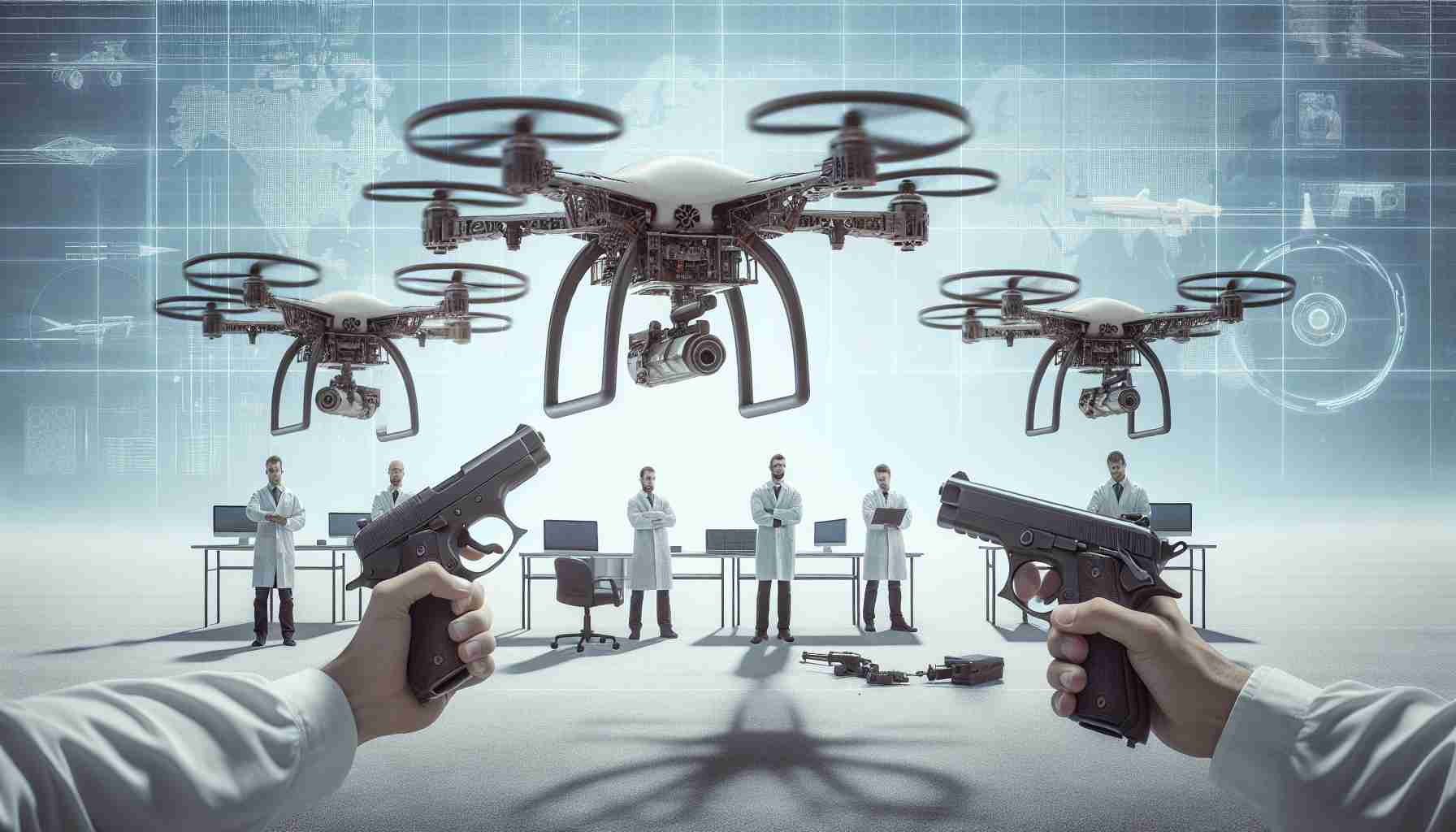In recent years, the intersection of traditional firearms technology and modern drone capabilities has sparked significant interest across various sectors, including law enforcement and military applications. One of the companies at the forefront of this innovation is Sig Sauer, known primarily for its high-quality firearms. Recently, reports have emerged that Sig Sauer is experimenting with equipping quadcopters with pistols, heralding what could be a groundbreaking shift in how we think about both drones and firearms.
These advanced systems leverage the versatility of unmanned aerial vehicles (UAVs) to expand their operational scope dramatically. By integrating firearms into quadcopter designs, Sig Sauer aims to create platforms that can be deployed in high-risk scenarios, such as hostage situations or tactical engagements, where it may be dangerous for human operators to intervene directly. This technology could potentially offer tactical teams a decisive advantage by allowing them to assess situations from the air and respond effectively without putting personnel at risk.
The concept of armed drones is not entirely new; military organizations have utilized UAVs for surveillance and precision strikes for years. However, Sig Sauer’s experiments represent a notable evolution in how these systems can be weaponized. Unlike large military drones that are typically operated from a distance, these smaller quadcopters can navigate tight urban environments and provide real-time intelligence while carrying out targeted actions.
One of the critical factors driving this experimentation is the advancement of drone capabilities, including enhanced mobility, increased payload capacity, and improved navigation systems. Built with sophisticated autopilot functions and improved imaging technology, these drones can operate autonomously or be controlled remotely, making them adaptable to various operational needs. The addition of firearms to such UAVs could transform them into force multipliers in environments that demand immediate action.
Moreover, the implications of this technology extend beyond the battlefield. Law enforcement agencies may find this technology useful for non-lethal engagements, crowd control, and surveillance operations. By deploying an armed quadcopter, agencies might manage sensitive incidents more effectively and minimize the risk of harm to officers and civilians alike. Safety and precision are paramount in any tactical situation, and the development of these aerial platforms could signify a new asset in public safety.
However, this innovation also raises significant ethical and legal questions. The prospect of armed drones operating in civilian environments is fraught with potential risks, including concerns over accountability, misuse, and the collateral damage that could result from their deployment. As Sig Sauer continues to explore this exciting yet controversial technology, the dialogue surrounding the responsible use of armed drones will undoubtedly intensify among lawmakers, ethicists, and the general public.
In conclusion, Sig Sauer’s exploration of pistol-armed quadcopters marks a significant point in the evolving landscape of drone technology. This initiative not only highlights the potential applications of UAVs in various sectors but also emphasizes the need for ongoing discussions surrounding the implications of such technology. As we move forward, it will be essential to balance innovation with responsibility, ensuring that advancements in drone capabilities are met with appropriate oversight and ethical considerations.
Innovative Tips and Facts on the Intersection of Drones and Firearms
The development of armed drones, such as those being experimented with by Sig Sauer, introduces fascinating advancements in technology, but it also presents numerous challenges and opportunities across several fields. Here are some tips, life hacks, and intriguing facts to consider when exploring this cutting-edge realm:
1. Understanding the Basics of Drones: Before diving into armed drones, familiarize yourself with the functionality of standard UAVs. Knowing how they operate, their components, and their applications in surveillance or delivery can provide valuable context. Consider looking at beginner guides on reliable drones like DJI and learning how to use them effectively.
2. The Importance of Regulatory Awareness: If you’re involved in any way with drone operations, especially those integrating firearms, it is crucial to stay informed about local and international laws governing UAV use. Understanding regulations can prevent legal issues and ensure adherence to safety standards. For current updates on drone regulations, check FAA.
3. Enhance Your Skills with Simulation: Training and simulation platforms are available to help operators hone their skills without the risks associated with live training. Many military and law enforcement agencies use these simulators to prepare for real-life scenarios involving armed drones.
4. Ethical Considerations are Imperative: As technology evolves, it becomes essential to engage in discussions regarding the ethical implications surrounding armed drones, especially when used in civilian contexts. Consider attending workshops or forums focused on technology ethics to better grasp the complexities involved.
5. Stay Updated with Technology Trends: The field of drone technology is rapidly evolving. Keep yourself informed about new advancements, including artificial intelligence integration and drone swarm capabilities. Websites like TechCrunch often cover the latest technology trends, including developments in UAVs.
6. Practical Uses Beyond Combat: While the idea of armed drones often conjures images of conflict, there are numerous peaceful applications. Drones can assist in search and rescue operations, environmental monitoring, and even delivering medical supplies to remote areas. Consider exploring these peaceful applications for potential community projects.
7. Real Estate and Drones: The real estate industry has seen drones become essential tools for aerial photography and inspections. Real estate agents use them to provide stunning visuals of properties. Learning how to use drones for this purpose can enhance marketing strategies.
8. Join Online Communities: Engage with online forums and social media groups focused on drone technology. These platforms can be valuable for sharing insights, asking questions, and learning from experienced enthusiasts and professionals alike.
9. Drones in Sports: UAVs are also finding their place in various sports, providing unique aerial views for broadcasters and fans. Understanding this new angle of sporting events may inspire innovative applications for drones in your area of interest.
10. Explore DIY Drone Projects: For tech enthusiasts, consider building your own drones. Many kits are available that allow you to create UAVs with specific functionalities. This hands-on experience can deepen your understanding of drone mechanics.
In conclusion, the fusion of drone technology and firearms opens a new frontier fraught with both promise and peril. By embracing the burgeoning landscape with a balanced perspective—focusing on skills enhancement, ethical considerations, and community engagement—we can contribute positively to this evolving field of technology. For further exploration of drone capabilities, you may visit Robotics Business Review for insights into broader applications and innovations in the industry.



















